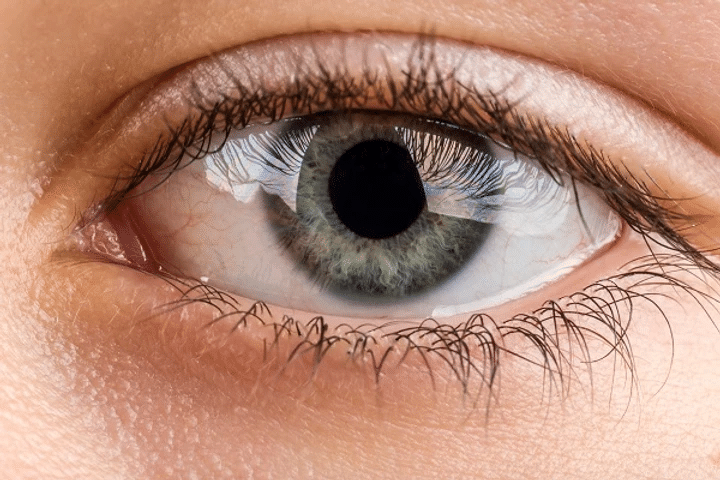Dilation and contraction of the pupils in light and dark environments is a natural response. But changes in the way the pupils respond to light can have a variety of causes.
Excessive dilation – known as mydriasis – is a more commonly observed symptom, meaning constriction of the pupils – or miosis – has fewer underlying causes.

A non-reactive – or fixed – dilated pupil
A pupil which remains excessively dilated in the presence of light is known as a ‘mydriatic pupil’.
Head trauma can damage the nerves of the pupil and iris, preventing contraction. But often, the cause may not be something as straight-forward as a head injury.
Causes of abnormal dilation can happen for numerous other reasons.
What causes pupils to not react to light?
1. Medication side-effects
Some prescription medications contain substances that block certain chemicals being transmitted to the eyes, resulting in pupil dilation, as well as reduced sweating and dry mouth.
2. Nervous-system disorders
Strokes, epilepsy and other nervous-system disorders often result in excessive dilation of the pupils. This is due to increasing brain mass compressing the oculomotor nerve.
3. Dilated pupils on drugs
Stimulant drugs like cocaine and amphetamines prevent the re-uptake of certain neurotransmitters, meaning that they remain active in the brain. This results in a forced stimulation, which is exhibited by dilated, non-responsive pupils.
4. Pupils not dilating due to drugs
On the other hand, opiates like heroin, morphine, fentanyl and codeine have the opposite effect, as they are depressors rather than stimulants.
As a result, they cause the pupil to contract. The contraction of a pupil is called ‘miosis’.
Other drugs associated with miosis are nicotine, eye drops and nasal sprays, and some drugs used in cancer chemotherapy.
5. Diseases
Pupil contraction can result from certain diseases.
- Horner’s Syndrome is a combination of symptoms, including pupil miosis, resulting from nerve damage.
- Other illness-based causes include cluster headaches result in a drooping of the upper eyelid, and inter-cranial bleeding in the upper brain stem. It can also result from an extremely rare brain disease called Fatal Familial Insomnia, which affects roughly 100 people worldwide.
6. Age
The condition of a person’s pupils reducing in size in old age is known as Senile Miosis.
Additionally, the pupils of newborn babies will remain small for the first few weeks to protect their developing eyes.
When to worry about unresponsive pupils
If you notice your pupils staying dilated in contact with bright light, or remaining contracted in dim light, make an appointment with your local optician
Other symptoms may include blurred vision or a headache. Your optician or optometrist will need to investigate the underlying cause.
More articles about pupils
Not quite what you were looking for? Check out some of our other articles about pupils:
- I have small pupils
- My pupils are very large
- My pupils look white
- My pupils are different sizes.





